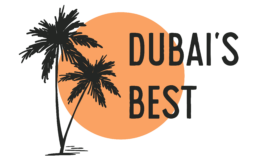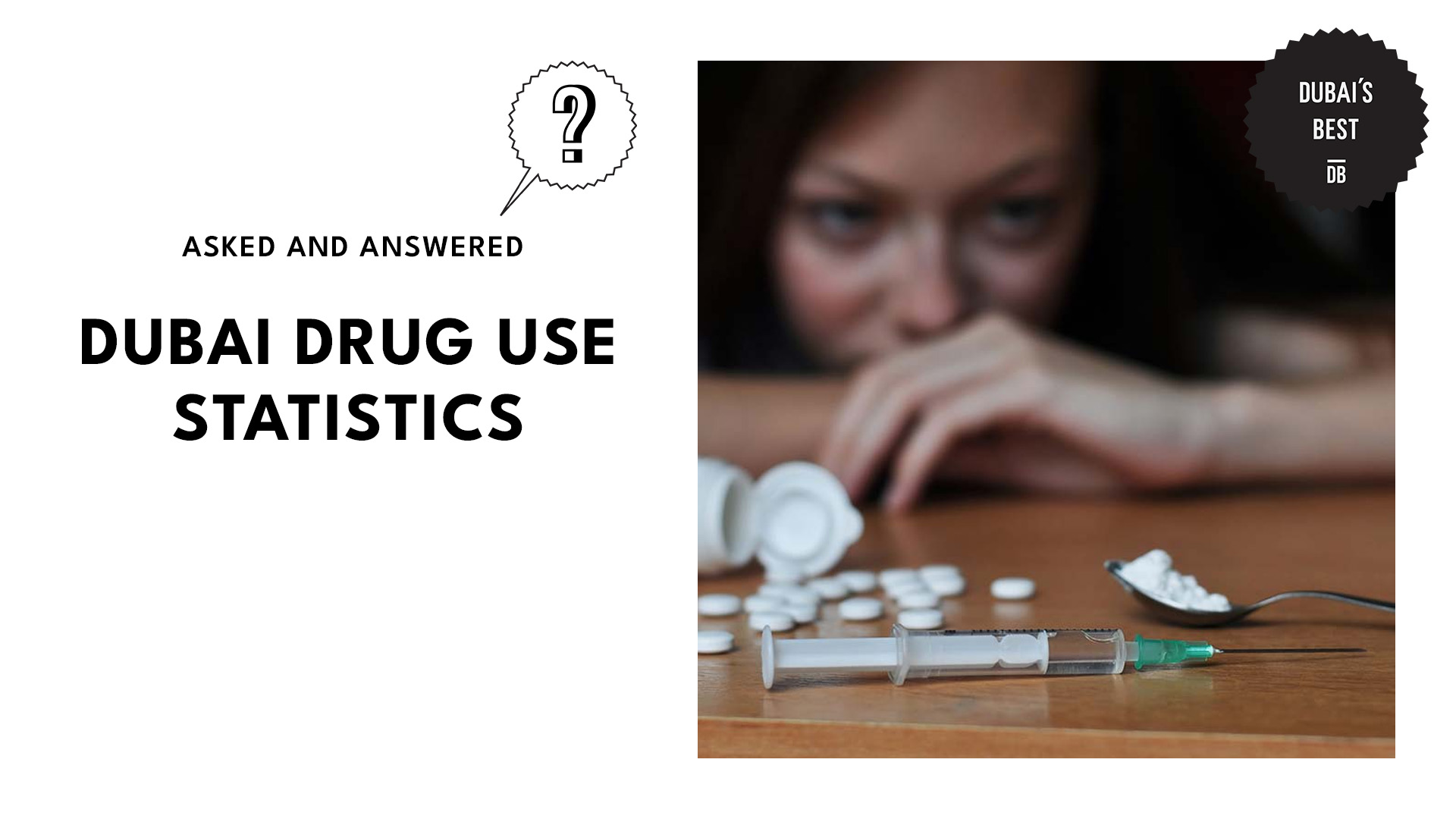Understanding Drug Use in Dubai: Key Statistics and Insights
Key Insights
• The UAE faces a major challenge with drug addiction, trafficking, and promotion, with 6.1 deaths per million from drug use.
• Drug trafficking has been a persistent issue since the 1980s, with Dubai Police reporting high drug-related deaths in 2001.
• Over 3.5 tons of drugs were seized, and 1,307 people arrested.
• In the UAE, prescription medicine is the most common drug for addiction, followed by stimulants, particularly among individuals aged 24 to 29.
Dubai keeps a zero-tolerance policy on drug use and trafficking, enforcing some of the world’s strictest laws. Even small amounts of illegal substances can lead to severe penalties, including imprisonment, fines, and deportation.
For one, possessing small amounts of drugs for personal use can lead to up to 4 years in prison and deportation for non-citizens. Larger quantities or drug trafficking may result in life imprisonment or the death penalty.
But while legal enforcement is strict, rehabilitation efforts for first-time offenders are growing, offering medical and psychological support. Public awareness campaigns further discourage substance abuse.
In general, Dubai’s stance aligns with Islamic and cultural values, reinforcing a strong anti-drug sentiment. The combination of strict laws, health initiatives, and cultural influences helps keep substance abuse low.
To show how strict the city is when it comes to handling drugs, here’s a table from the Government of Dubai’s major crime statistics:
| Year | Major Crime Statistics: Drugs(per hundred thousand people) |
| 2017 | 14.3 |
| 2018 | 12.1 |
| 2019 | 14.3 |
| 2020 | 12.3 |
| 2021 | 9.3 |
| 2022 | 8.4 |
| 2023 | 7.6 |
Drug Use in Dubai
Law enforcement officers arrested about 12,000 or exactly 11,988 suspected drug traffickers across the UAE in 2023.
In the same year, Dubai Police seized 14.6 tons of illegal drugs, including heroin, cocaine, and meth. The first quarter also saw 6 million narcotic tablets confiscated, with Dubai accounting for 47% of UAE drug-related arrests.
The UAE prioritizes rehabilitation and reintegration as well, though specific admission stats are scarce. Over 5 years, authorities seized 78 tons of drugs worth AED 2.4 billion.
This achievement was done by using of AI-powered tools. These automatically detect and block social media platforms and websites promoting drugs, both locally and globally.
Commonly Abused Substances in Dubai
From a study, patients commonly abused opioids (77%), cannabis (71%), alcohol (63%), heroin (58%), and benzodiazepines (51%). But most patients in a UAE study abused alcohol (41%), and only 20.1% were polysubstance abusers.
Prescription drug abuse, particularly opioids and benzodiazepines, is also rising due to self-medication and misconceptions about their safety.
Synthetic drugs, especially Captagon, have become a major threat too. In September 2023, Dubai Police 13 tons of the addictive amphetamine captagon, valued at over $1 billion, concealed within a shipment of doors and decorative building panels.
Captagon production is largely based in Syria, supplying around 80% of the global market. Traffickers smuggle the drug into the Gulf through Jordan and increasingly via Europe.
Dubai authorities continue to crack down on drug trafficking, using advanced technology and intelligence operations to curb the growing synthetic drug trade.
Demographics of Drug Use in Dubai
20% of the UAE population aged 15 and older use tobacco, while 12.7% of youth are affected. The average alcohol consumption per capita is also 2.03 liters for individuals aged 15 and older.
In addition, 0.3% of the population aged 15 and older are dependent on alcohol, and only 0.02% of the population aged 15 to 64 use opiates.
Impact of Drug Use on Dubai’s Society
In 2021, 8,428 people were arrested in the UAE for drug-related offenses, a 20.8% increase from 6,973 in 2020.
Substance abuse leads to severe health issues like lung or heart disease, stroke, or cancer, as well as mental disorders like depression. The stigma surrounding addiction prevents many from seeking help, perpetuating the cycle.
Families of those struggling with addiction often face emotional stress, financial hardship, and social isolation. Children in these homes are at greater risk of neglect and developing their own substance use issues.
Communities also suffer from higher crime rates and a strained healthcare system due to widespread drug abuse. Substance abuse fuels criminal activities and taxes law enforcement resources.
Dubai’s Drug Prevention and Awareness Campaigns
Dubai’s government combats drug use through initiatives by agencies like Dubai Police and the UAE National Anti-Drug Council, focusing on prevention and awareness.
Plus, many schools teach students about the risks of drugs, while public campaigns spread awareness through media and community outreach.
Dubai hosts events like the International Day Against Drug Abuse to raise awareness as well. These events include talks, workshops, and exhibitions aimed at educating the public on the dangers of drugs and providing resources for support and recovery.
Law Enforcement and Drug Control in Dubai
Dubai Police, along with agencies like the UAE Federal Narcotics Department and customs officials, play a key role in intercepting drug trafficking and enforcing strict drug laws.
The city also uses AI, surveillance systems, and scanning equipment at airports and borders to detect hidden drugs, improving enforcement efficiency.
Moreover, the city cooperates with global agencies like Interpol and UNODC to share intelligence and dismantle international drug syndicates.
Rehabilitation and Support Services for Drug Users in Dubai
Dubai has specialized rehab centers like the Dubai Rehabilitation and Welfare Center and The Priory Wellbeing Centre, offering inpatient and outpatient care for drug addiction.
Rehabilitation includes detoxification, medical care, and psychological therapies like Cognitive Behavioral Therapy (CBT), group therapy, and family counseling to support recovery.
The programs combine evidence-based therapies and personalized care, with aftercare services to help prevent relapse and ensure long-term recovery.
Support includes counseling, support groups, and the Dubai Health Authority’s Addiction Hotline at 800 342 (800 DHA) or +971-42198888 outside the UAE for treatment guidance and assistance.
Challenges and Opportunities in Addressing Drug Use in Dubai
Dubai faces emerging challenges in tackling drug use, including the rise of synthetic drugs, online trafficking, and the spread of new psychoactive substances, particularly among youth.
Synthetic drugs, like synthetic cannabinoids and fentanyl, are also often more potent and harder to detect. This is while online drug trafficking via dark web markets complicates law enforcement efforts.
Additionally, the rise of new psychoactive substances marketed as legal alternatives poses risks for young people.
But as an opportunity, AI and machine learning can help improve drug detection by analyzing trafficking patterns and identifying networks more efficiently. At border points, AI-powered systems can enhance detection of hidden drugs.
Telemedicine also provides an opportunity for remote addiction treatment, allowing individuals to access support through virtual consultations, therapy, and online support groups.
Moreover, artificial intelligence can be used for predictive prevention, identifying at-risk individuals and implementing targeted interventions early.
Public awareness efforts can also be enhanced through digital platforms like social media, mobile apps, and interactive tools that engage younger audiences in drug prevention education.
References
- Addiction and Health | National Institute on Drug Abuse. (2025, January 8). National Institute on Drug Abuse. https://nida.nih.gov/publications/drugs-brains-behavior-science-addiction/addiction-health
- Alharbi, F. F., Alsubaie, E. G., & Al-Surimi, K. (2021). Substance abuse in Arab world: Does it matter and where are we? In Springer eBooks (pp. 2371–2398). https://doi.org/10.1007/978-3-030-36811-1_179
- Badawi, S. (2024, November 24). Drug crimes, trafficking and possession. AK Advocates. https://www.lawyersuae.com/drug-abuse-penalties-and-trafficking-offenses/
- Britt, T. (2023, September 22). Can telehealth support with addiction? https://www.medicalnewstoday.com/articles/can-telehealth-support-with-addiction
- Charges for carrying marijuana in UAE | Dubai Illegal Drugs Law. (2023, August 21). Al Riyami Advocates. https://alriyamiadvocates.com/our-expertise/criminal-law/drug-possession/
- Combatting Drug Crime in the United Arab Emirates: a Drone-Based system for monitoring and tracking suspects. (2023, May 24). IEEE Conference Publication | IEEE Xplore. https://ieeexplore.ieee.org/document/10184245
- Dubai Health Authority. (n.d.). Contact DHA. https://stg.dha.gov.ae:8090/en/contact-dha
- Internet, F. (n.d.). International Day Against Drug Abuse and Illicit Trafficking. Emirates Health Services – UAE. https://www.ehs.gov.ae/en/media-center/events/international-day-against-drug-abuse-and-illicit-trafficking-79646a13
- Pita, A., Pita, A., & Pita, A. (2025, January 5). Captagon, the drug that turned Syria into a narco-state under Bashar al-Assad’s dictatorship. EL PAÍS English. https://english.elpais.com/international/2025-01-05/captagon-the-drug-that-turned-syria-into-a-narco-state-under-bashar-al-assads-dictatorship.html
- Police, D. (n.d.). Major crime statistics. https://www.dubaipolice.gov.ae/wps/portal/home/opendata/majorcrimestatistics/!ut/p/z0/04_Sj9CPykssy0xPLMnMz0vMAfIjo8zi_T29HQ2NvA18_V2NzQwCA_y9Ayy83Y3cvcz0g1Pz9AuyHRUBB3FbHA!!/
- Staff, C. (2024, June 15). The effects of drug addiction on family members. Compassion Behavioral Health. https://compassionbehavioralhealth.com/the-effects-of-drug-addiction-on-family-members/
- Tgfm. (2024, May 3). UAE’s AI-powered campaign seizes 78 tonnes of illegal drugs worth Dh2.4 billion. The Global Filipino Magazine. https://theglobalfilipinomagazine.com/uaes-ai-powered-campaign-seizes-78-tonnes-of-illegal-drugs-worth-dh2-4-billion/
- Transforming trade: how Dubai Customs is harnessing AI for enhanced trade facilitation and border control. (n.d.). WCO News. https://mag.wcoomd.org/magazine/wco-news-102-issue-3-2023/transforming-trade-how-dubai-customs-is-harnessing-ai-for-enhanced-trade-facilitation-and-border-control/
- United Arab Emirates Country profile. (n.d.-a). International Society of Substance Use Professionals. https://www.issup.net/national-chapters/issup-united-arab-emirates/country-profile
- United Arab Emirates Country profile. (n.d.-b). International Society of Substance Use Professionals. https://www.issup.net/national-chapters/issup-united-arab-emirates/country-profile
- Zain, A. A. (2019, June 27). Prescriptions medicines are most abused drugs in UAE – News | Khaleej Times. Khaleej Times. https://www.khaleejtimes.com/uae/prescriptions-medicines-are-most-abused-drugs-in-uae

